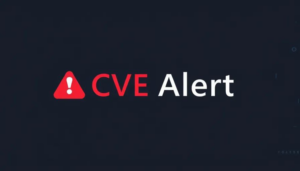CVE Alert: CVE-2025-9426 – itsourcecode – Online Tour and Travel Management System
CVE-2025-9426
A weakness has been identified in itsourcecode Online Tour and Travel Management System 1.0. This affects an unknown part of the file /package.php. Executing manipulation of the argument subcatid can lead to sql injection. The attack may be performed from a remote location. The exploit has been made available to the public and could be exploited.
AI Summary Analysis
Risk verdict
High risk: a publicly disclosed SQL injection flaw in a remotely accessible component, exploitable without authentication.
Why this matters
Successful exploitation could expose or alter customer and booking data, disrupt operations, or enable data tampering. The high CVSS v3.1 score and public PoC indicate attackers may rapidly automate targeting of exposed deployments.
Most likely attack path
An unauthenticated attacker remotely targets a vulnerable input in the web app’s PHP component, sending crafted payloads that alter SQL queries. With network access and no user interaction required, successful exploitation can lead to data leakage, modification, or availability impact across the application’s database.
Who is most exposed
Web deployments of itsourcecode’s Online Tour and Travel Management System, especially in small-to-medium businesses using shared hosting or single-VM stacks with internet-facing endpoints.
Detection ideas
- SQL error messages or database errors logged by the app or web server.
- Unusual or highly repetitive queries involving the vulnerable parameter.
- Anomalous authentication-agnostic access attempts from diverse IPs targeting package.php.
- WAF or IDS alerts for SQLi payload patterns in HTTP requests.
- Notification of known PoC strings or exploit patterns in application logs.
Mitigation and prioritisation
- Apply vendor patch or upgrade to fixed version when released.
- Enforce parameterised queries and stored procedures; avoid dynamic SQL in the affected area.
- Implement input validation and proper escaping for all user-supplied data.
- Apply least-privilege database accounts and monitor for anomalous DB activity.
- Enable focused SIEM/WAF rules and establish an urgent patch window; document mitigation steps in change management. If KEV/EPSS data becomes available, adjust prioritisation accordingly.
A considerable amount of time and effort goes into maintaining this website, creating backend automation and creating new features and content for you to make actionable intelligence decisions. Everyone that supports the site helps enable new functionality.
If you like the site, please support us on “Patreon” or “Buy Me A Coffee” using the buttons below
To keep up to date follow us on the below channels.

![[Palo Alto Networks Security Advisories] CVE-2025-4614 PAN-OS: Session Token Disclosure Vulnerability 1 Palo_Alto_Networks_Logo](https://www.redpacketsecurity.com/wp-content/uploads/2025/02/Palo_Alto_Networks_Logo-300x55.png)

